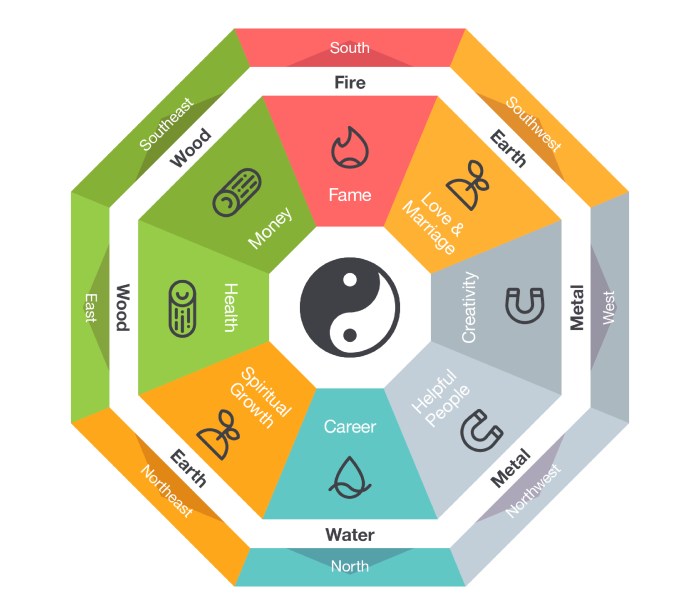Feng shui, an ancient Chinese art of arranging living spaces, is based on harmony and balance between the elements of nature. For those new to feng shui, understanding its principles can transform your home into a rejuvenating sanctuary. This guide will introduce you to the foundational concepts of feng shui, including the five elements—earth, metal, water, wood, and fire—and how they can be incorporated into your home décor and layout to enhance your living space effectively.
Five Elements: The Building Blocks of Feng Shui
In feng shui, the five elements of nature—earth, metal, water, wood, and fire—play crucial roles in balancing energy within your home. Earth is associated with stability and nourishment; introduce it using earthy tones like yellows or browns and square shapes through items like a square yellow rug or terracotta pots. Metal symbolizes clarity and precision; incorporate it with colors such as white or metallic finishes and circular objects, such as a round silver mirror or stainless steel frames. Water reflects wisdom and connectivity, enhanced by dark blue or black colors and wavy patterns; consider adding a small indoor water fountain or artworks depicting ocean scenes to invoke this element. Wood represents growth and vitality, introduced through green colors and vertical lines with tall, leafy plants or wooden furniture. Lastly, fire stimulates enthusiasm and visibility and can be integrated with reds or bright oranges and triangular shapes, such as lamps with triangular shades or candles.
Commanding Position: Your Power Spot
The commanding position is a fundamental concept in feng shui, crucial for positioning important furniture like your bed, desk, and stove. These should be placed in a way that allows you to see the door without being directly in line with it. This setup not only promotes a subconscious sense of security but also opens up the flow of positive energy and opportunities into your life.

Room by Room Feng Shui Tips
In the entryway, known as the mouth of qi, where energy enters, keep this area clear of clutter and well-lit to invite positive energy inside. A tidy, welcoming entrance sets the tone for the rest of your home. In the living room, ensure that seating is ample and arranged to foster easy conversation. Avoid positioning chairs with their backs to the entrance and use soft furnishings and plants to enhance comfort and add the wood element. As a hub of nourishment, maintain cleanliness and organization in your kitchen. Keep counters clutter-free and the refrigerator tidy, removing outdated items to ensure energy flows freely and healthily. In the bathroom, minimize downward energy by keeping the toilet lid and bathroom door closed when not in use. This helps prevent wealth from metaphorically draining away. In the bedroom, place your bed in the commanding position for restful sleep and avoid storing items underneath it to prevent stagnant energy. Use soothing colors and soft textiles to promote relaxation and peace.
Harmonizing Your Home with Feng Shui
Adopting feng shui principles in your home doesn’t require a complete overhaul—simple adjustments and additions can significantly influence the flow of energy. By integrating the five elements strategically and ensuring furniture placements that promote positive energy, your home can become a source of comfort and tranquility. Start small, experiment with what feels right, and gradually, your space will transform into a balanced and harmonious haven.